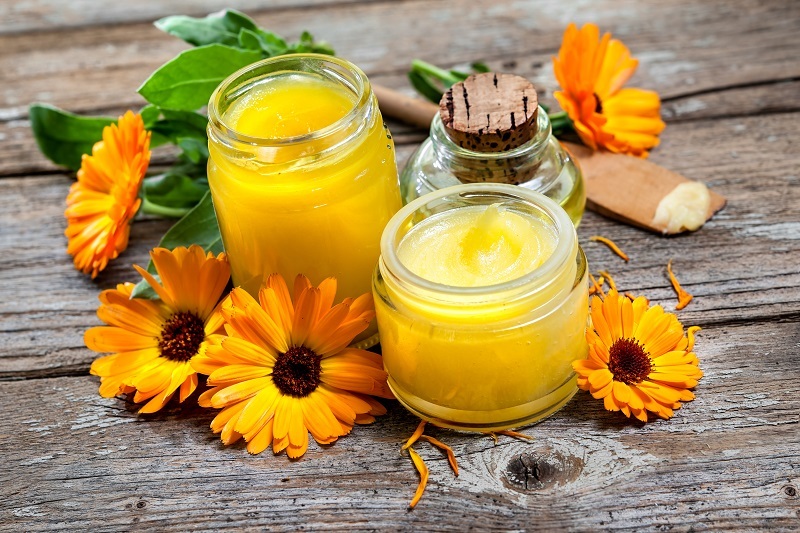Create a stunning garden with these hydrangea care tips
Posted on 03/07/2025
Create a Stunning Garden with These Hydrangea Care Tips
If you dream of a vibrant garden filled with beautiful, lush blooms throughout the summer and into fall, hydrangeas are the ideal choice. Known for their massive flower clusters, rich foliage, and variety of colors, hydrangeas can serve as the centerpiece of almost any landscape design. But to truly make them shine, you must know the secrets behind their optimal growth. In this comprehensive guide, discover expert hydrangea care tips to ensure your garden bursts with color and life every season.
Why Choose Hydrangeas for Your Garden?
Hydrangeas are celebrated for their versatile charm. Whether you desire a cottage-inspired border, an elegant focal point, or a shade-loving bloom to brighten any spot, these plants deliver. Their flower clusters--ranging in color from soft pinks and blues to vivid purples and crisp whites--create lasting visual impact.
- Wide variety of hydrangea species and hybrids suit different climates and garden styles.
- Bloom duration: Enjoy flowers from late spring through autumn.
- Many varieties offer attractive autumn foliage and winter interest with their bare stems.

Understanding Different Types of Hydrangeas
To start your journey to a stunning hydrangea garden, it's crucial to choose the right variety. Here are the most popular hydrangeas for gardens, each offering unique beauty and providing different care requirements:
Bigleaf Hydrangeas (Hydrangea macrophylla)
- Most common in home gardens; famous for large, round flower heads.
- Colors include blue, pink, or even purple.
- Some types, such as 'Endless Summer', bloom repeatedly (rebloomers).
Pee Gee or Panicle Hydrangeas (Hydrangea paniculata)
- Recognizable by their elongated, cone-shaped blooms.
- Exceptionally hardy--excellent for colder climates.
- Flowers start white, often fading to pink or even green as summer progresses.
Oakleaf Hydrangeas (Hydrangea quercifolia)
- Feature unique, deeply lobed leaves reminiscent of oak trees.
- Provide spectacular fall color and year-round interest.
- Well-suited to shadier spots and woodland gardens.
Smooth Hydrangeas (Hydrangea arborescens)
- Native to North America, including 'Annabelle'--famed for enormous white blooms.
- Excellent for mass planting and low-maintenance gardening.
Climbing Hydrangeas (Hydrangea anomala petiolaris)
- Perfect for walls, arbors, and fences--adds vertical interest to gardens.
- Slow to establish but long-lived and gorgeous when mature.
Essential Hydrangea Care Tips for a Gorgeous Garden
Cultivating healthy, luxurious hydrangeas doesn't have to be complicated. With a bit of attention to their key needs, you can ensure your hydrangea garden will turn heads all season long. Here are the most important hydrangea care tips:
1. Choosing the Right Planting Location
- Shade vs. Sun: Most hydrangeas thrive with morning sun and afternoon shade. However, panicle types can handle more sun, while bigleaf and oakleaf varieties may prefer more shelter.
- Soil Drainage: Hydrangeas love moist, well-drained soil--avoid soggy spots.
- Protection from Wind: Plant in areas shielded from strong, drying winds to prevent leaf scorch and drooping blooms.
2. Proper Watering Practices
- Hydrangeas need consistent moisture, especially during their first few years.
- Deep watering is better than frequent, shallow watering--water at the base early in the morning.
- Mulch with leaf mold, pine needles, or compost to retain moisture and regulate soil temperature.
3. Soil Preparation and Amendments
- Test your soil's pH before planting. Hydrangeas generally prefer slightly acidic conditions.
- For blue flowers: Acidic soil (pH 5.2-5.5) works best. Amend with aluminum sulfate if necessary.
- For pink flowers: Neutral to alkaline soil (pH 6.0-6.2) will favor pink hues. Add garden lime to raise the pH.
Expert Tip: The color-changing ability of bigleaf hydrangeas (hydrangea macrophylla) is a fun way to experiment with your garden design. Simply adjusting soil pH can transform flower color from season to season!
4. Fertilizing Hydrangeas for Maximum Blooms
- Apply a balanced, slow-release fertilizer (10-10-10 or 14-14-14) each spring just as new growth appears.
- For lush foliage and bigger blooms, supplement mid-season with a diluted liquid fertilizer--avoid over-fertilizing, as it may result in fewer flowers.
5. Pruning Hydrangeas: Timing and Technique
- Bigleaf & Oakleaf Hydrangeas: These bloom on "old wood" (last year's stems). Prune just after flowering--never in spring, or you'll risk removing next year's buds.
- Panicle & Smooth Hydrangeas: These bloom on "new wood" (current season's growth). Prune in late winter or early spring to encourage bigger, better blooms.
- Climbing hydrangeas may need only light pruning to control size and shape, ideally after flowering.
- Always use sharp, sanitized tools to prevent the spread of disease.
6. Encouraging Larger Blooms and Longer Flowering Periods
- Deadhead spent flowers to encourage more blooms, except when you want attractive seed heads for winter display.
- Regularly remove weak or dead stems from the base.
- Provide steady moisture during bud development--consistent care equals outstanding flowers.
7. Dealing with Common Pests and Diseases
- Pests: Watch for aphids, mites, and scale insects. Use insecticidal soap or neem oil for mild infestations.
- Diseases: Ensure good airflow and avoid overhead watering to prevent powdery mildew, leaf spot, and root rot.
- Mulch properly to protect roots against temperature extremes and suppress weeds.
Creative Design Ideas: Using Hydrangeas to Make Your Garden Stand Out
Now that you've mastered essential hydrangea care techniques, it's time to let your creativity flourish. Hydrangeas can be used in many innovative and eye-catching ways:
- Mixed Borders: Pair hydrangeas with hostas, ferns, roses, or ornamental grasses for vibrant layered effects.
- Foundation Plantings: Use hydrangeas along the house, patio, or fences for a welcoming and elegant look.
- Cottage Gardens: Add charm by mixing various hydrangea types, interspersed with annuals and perennials.
- Grow climbing hydrangeas on arbors and trellises to create living walls and vertical accents.
Pro Tip: Enjoy cut hydrangea blooms indoors--fill vases for long-lasting bouquets or dry flower heads for decorative arrangements throughout the year.
Frequently Asked Questions About Hydrangea Care
How do I make my hydrangeas bloom more?
Ensure your plants receive the correct amount of sunlight--too little can reduce blooming. Feed them with balanced fertilizer, keep their soil moist, and prune at the right time for the type you have.
When is the best time to plant hydrangeas?
Early spring or fall is the best time to plant, allowing roots to establish before summer heat or winter cold.
Can hydrangea flowers really change color?
Yes! Bigleaf hydrangeas are famous for changing color based on soil pH. Acidic soils yield blue flowers, alkaline soils favor pink.
Why are my hydrangea leaves turning yellow or crispy?
Yellow leaves may signal overwatering, poor drainage, or nutrient deficiency. Crispy leaves often result from water stress or too much afternoon sun.
How do I overwinter my hydrangeas?
For cold climates, protect base stems with mulch or straw. Consider burlap wraps for young or sensitive plants, especially for bigleaf hydrangeas.
Hydrangea Care Calendar: Month-by-Month Guide
Planning year-round care ensures optimal growth and blooms. Here's a seasonal schedule to help you stay on top of your hydrangea garden:
- Spring: Fertilize, prune new-wood bloomers, water deeply, and mulch.
- Early Summer: Monitor for pests, deadhead as blooms fade, maintain steady watering.
- Late Summer: Continue deadheading, watch for signs of drought stress, prepare to stop fertilizing.
- Fall: Prune old-wood bloomers right after flowering, apply fresh mulch, and water deeply before first frost.
- Winter: Protect with mulch; avoid disturbing dormant branches. Plan next season's additions!

Final Thoughts: Grow Stunning Hydrangeas with Confidence
With these comprehensive hydrangea care tips, you can transform any outdoor space into a breathtaking garden. Remember, the keys are proper site selection, soil preparation, moisture management, and pruning according to bloom type. Whether you prefer old-fashioned mopheads, panicles, or climbing hydrangeas, following these guidelines will reward you with dazzling color and healthy growth for years on end.
Start planning today, and enjoy the enchanting beauty and versatility of hydrangeas in your landscape!
Additional Resources
- Gardener's Supply: Hydrangea Care
- University of Minnesota Extension: Hydrangeas
- RHS Guide to Growing Hydrangeas
Latest Posts
7 Unbelievable Tulip Facts That Will Amaze You
Smart Solutions to Extend the Life of Your Cut Flowers
Peonies: A Colorful Symbolism Journey







